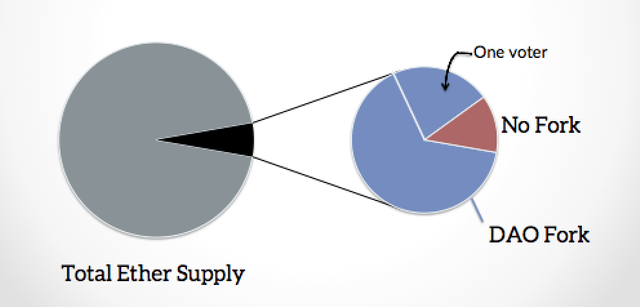Blockchain Governance: A Dilemma

All blockchains have to be governed, and are, whether you know it or not. Any system has to have governance, a way for people to agree on both changes to the system and data on the system.
But some blockchains are governed better than others. Take Bitcoin for example. Bitcoin is an example of primarily off-chain governance. While miners agree on blocks on-chain, whenever code needs to be changed there is no way to agree on it on the blockchain.
So for a change of code to happen (through a hard fork), developers must meet with the miners and convince key miners to support the change, as well as convince the public. Note that none of this is done on the Bitcoin chain, it is all interaction outside of the network. This type of off-chain governance can lead to incidents such as the SegWit2X fork for Bitcoin. The miners and developers met in a room closed to a public and made a deal, creating the “fork.”
More recently, modern projects have been using more advanced techniques for governance which are called on-chain governance. I will write in a later post about these sorts of protocols and their futures (some of which somewhat avoid the problems mentioned in this post). Steem is an easy to understand example of one of those projects. In Steem, users can vote with their SP on witnesses. These witnesses are representatives for the user-base and govern the network, doing important things such as signing blocks and writing price feeds.
But on-chain governance has its pitfalls too. Using the Steem example, we can see that witness votes have a few problems:

This graph shows how witness votes are compromised. That big dark blue vote for many of the witnesses is by @ranchorelaxo. His vote is worth so much, that if he voted for @themarkymark for witness, @themarkymark would rise almost 20 places in the witness rankings, giving him a much bigger say in the governance of the platform.
I’m not saying that @ranchorelaxo is a bad actor here (though some would say that he is), but he has far too big a say in the governance of the Steem network. If he became a witness, removed his witness votes for everyone else, and just self-voted for his witness position, he would be at quite a high position for only having one vote.
Vitalik Buterin writes on on-chain governance:
One of the main criticisms of coin voting mechanisms so far is that, no matter where they are tried, they tend to have very low voter participation. The DAO Carbonvote only had a voter participation rate of 4.5%.
Additionally, wealth distribution is very unequal, and the results of these two factors together are best described by this image created by a critic of the DAO fork:

Much of these problems rest on the axiom of blockchains that using a one address = one vote method of democracy does not work. It is so easy to generate addresses that an attacker could create thousands of them and quickly reach the majority.
That’s why most all on-chain governance schemes use a system of one coin = one vote. While this does make it difficult for someone to attack the network, it means that those who are wealthiest have the largest say in the government. Can you imagine what that would be like? Just look at this:

The top 1% of people in the United States own 35% of the wealth. Imagine that with government. Just 1% of people have a 35% vote in the government. But that’s not all. Because cryptocurrencies are sold for much cheaper at ICO period, the wealthiest people who got in first will own an even bigger share of the cryptocurrency. Just one privately owned Ethereum account holds 1 million Ether, which they had bought in the presale.
So, which would you prefer:
- A system where people with the most wealth have the biggest say in government, but in a transparent way (on-chain)?
- A system where important miners and developers have the biggest say in government, meeting without transparency (off-chain)?
It is truly a dilemma. What do you think? Share it in a reply.
I will be writing a follow-up post to this, talking about possible, but unproven, solutions to this dilemma.
I think the STEEM on-chain solution and voting for witnesses is superior to off-chain like the whole bitcoin mess. However, the inequality issue that permeates the platform must be addressed as you describe. Were the wealthiest accounts just a result of early adopters getting most of the early STEEM or something else? I never did figure out to what degree the big accounts were from outside money coming in vs earned within STEEM.
Most of the biggest accounts were people getting in at ICO or early stage with lots of their own money. For example, putting in 100,000$ would have got you 1,000,000 STEEM if you invested in the beginning. And for someone who has millions of dollars, losing 100,000$ wouldn't be that much of a loss.
But many of the dolphins and large minnows right now got it from their own earnings (also early adopters though).